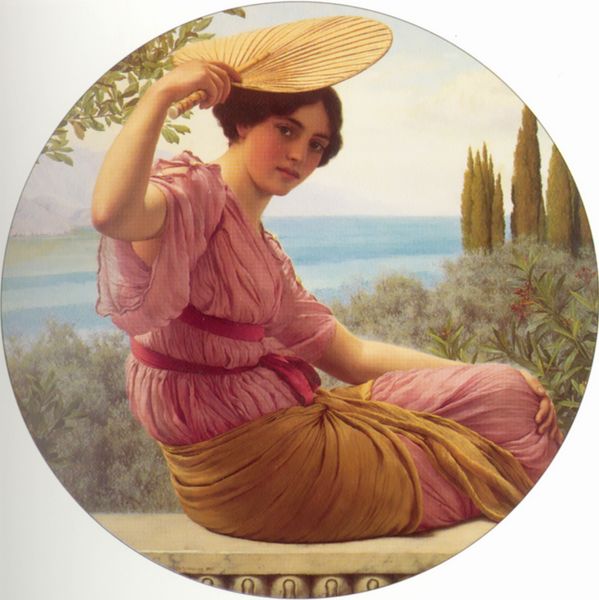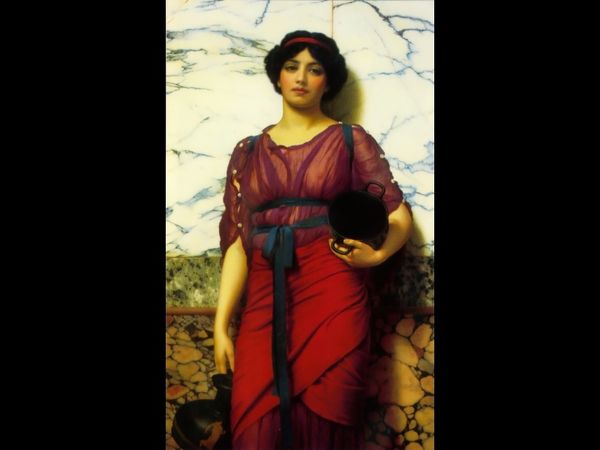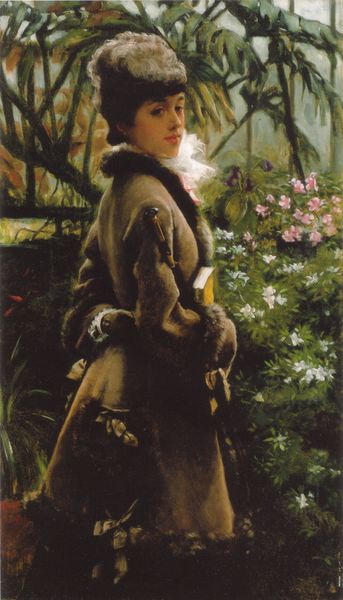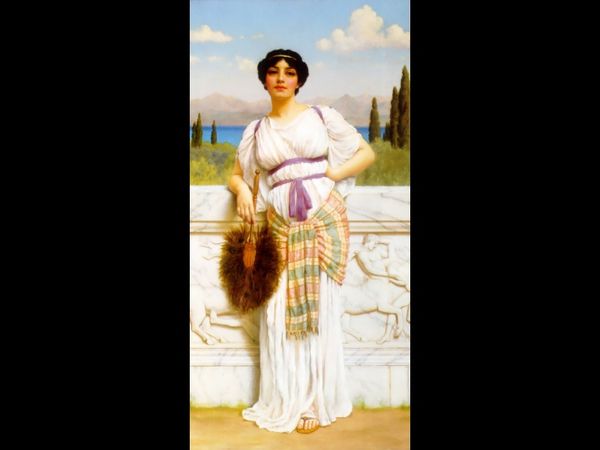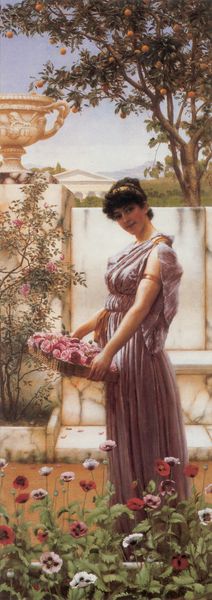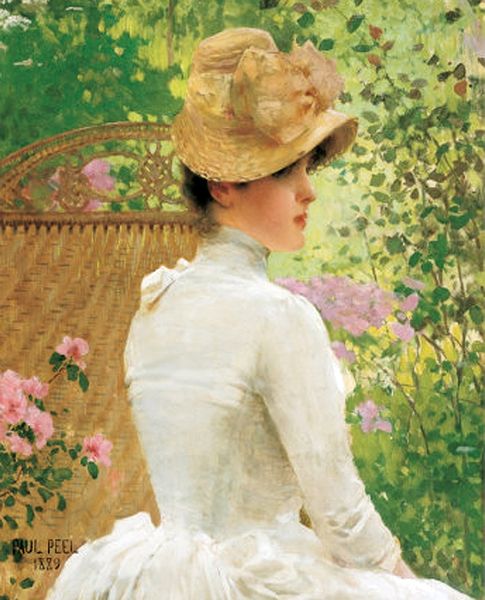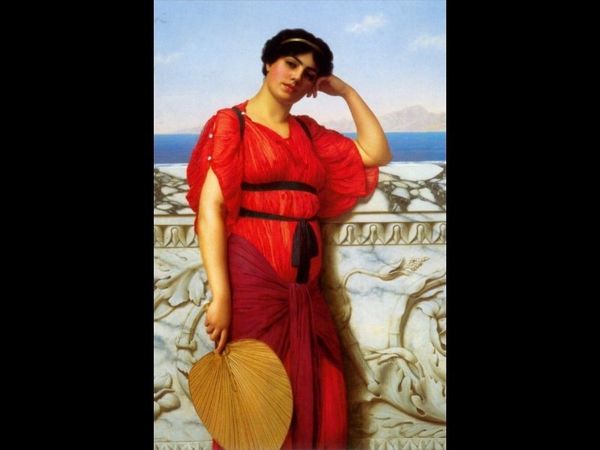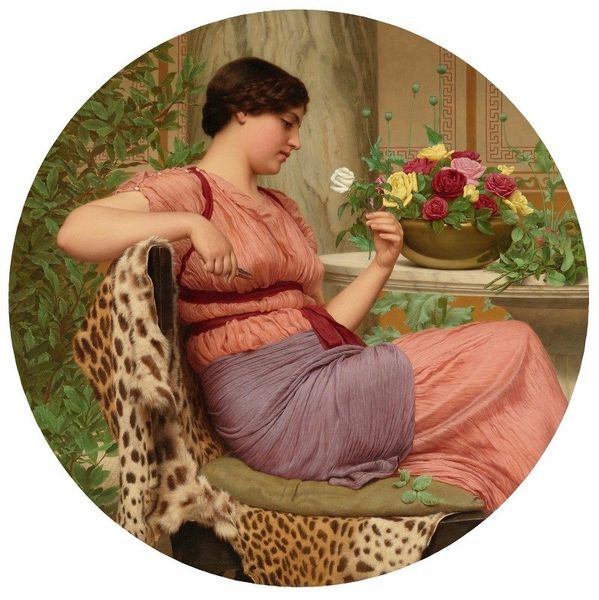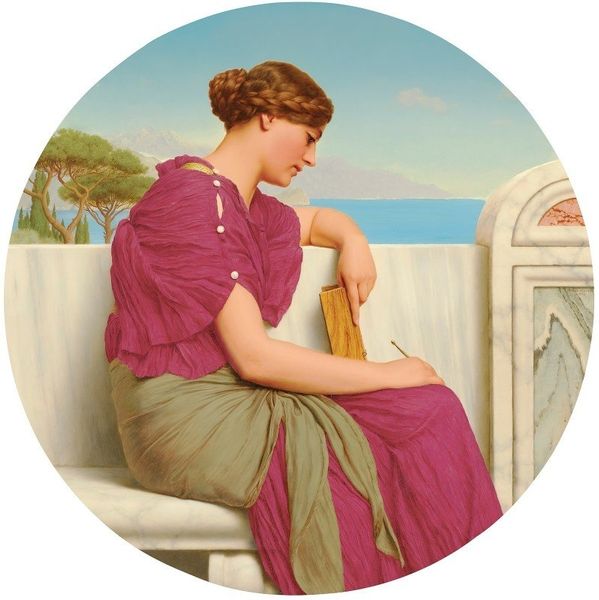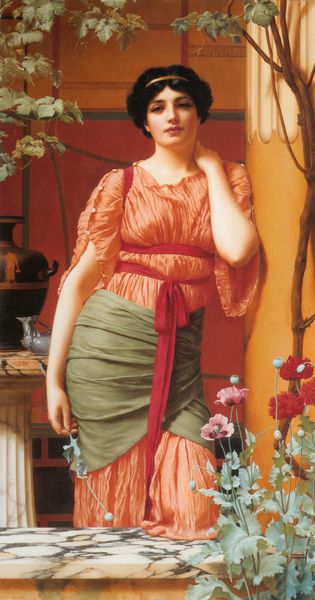
Copyright: Public domain
Curator: John William Godward, with his painting *A Tryst* from 1912, offers us a glimpse into a world steeped in romanticism, academic precision and perhaps a touch of veiled narrative. What's your first take on this scene? Editor: I’m struck by the expectant mood. The way she shields her eyes, peering into the distance… it hints at someone waiting, or looking out for something that's never there at all. Curator: The image certainly presents layers beyond a simple portrait. The palette is interesting, isn’t it? How the ochre and muted reds create warmth, yet she casts a watchful shadow. Did Godward subtly hint at unease through colour and composition, perhaps questioning if this “tryst” is safe? Editor: Absolutely. It’s more than just pretty women in classical garb, isn't it? Look at those poppies at the base of the wall. They're bold, a striking crimson that demands your attention. In iconography, the poppy's a symbol for sleep, oblivion, even death… which feels dramatically fitting for an illicit rendez-vous. Does it amplify the underlying sense of disquiet that you noted? Curator: Oh, I like how you spotted that! Poppies also relate to remembrance but, maybe oblivion would have served our woman well in this particular tryst. It might also echo how Godward tragically embraced oblivion himself; an artist caught between centuries, feeling irrelevant in the face of modernism, sadly, he took his own life not too long after. Perhaps his later works possess more than mere nostalgic longing? Editor: An artistic premonition… tragic indeed. But look also at the classical details – the meticulously rendered drapery, the marble bench with its decorative scrolls, her careful posture... It screams calculated beauty, yes, but that very calculation seems to suppress some underlying feeling, whether excitement or, as you suggested, growing fear. It also underscores, I think, the image of the woman as the sole repository of meaning. Where's the other half of the tryst? What meaning could we extract if they both were physically present in the scene? Curator: It is so very telling; and this calculated precision of details that does allow a kind of emotional restraint—perhaps a desire to master emotions or the future. The painting style, a combination of realism and romanticism, emphasizes not only the superficial likeness of forms but the emotional tension felt just before she spots, or fails to spot, who she is looking for. In a way, Godward, by capturing this tryst, reveals an emotional truth rather than an historical one. Editor: In that case, this is no period piece at all. In it’s exploration of emotional tension, perhaps we find a mirror reflecting the uncertainties of all intimate encounters; as fleeting and symbolic, in it’s way, as the crimson poppy. Curator: Leaving the work still relevant after all this time. Indeed, what appears simple reveals complexity. A final, thoughtful gaze will no doubt yield much more...
Comments
No comments
Be the first to comment and join the conversation on the ultimate creative platform.
